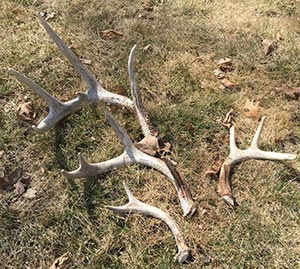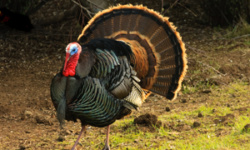If you didn’t get that big buck you saw during the deer season chances are he still might be out there and hopefully he has stuck around your area so you can locate the antlers he has or is soon to drop.
Knowing when to look: After the rut the connective tissue holding the antlers on begins to deteriorate allowing the antlers to fall off. This can happen mid-winter to early spring. One great way of knowing when to look for shed antlers is by using a trail camera and seeing when you start noticing bucks with missing antlers.
Where to look: Bedding areas, travel routes, and feeding areas are the best locations to locate shed antlers but they can be anywhere. We are not the only ones looking for antlers. Squirrels, porcupines, fox, mice and more animals are also out there chewing on antlers and carrying them around.
A bedded buck may get out of its bed and shake the snow off his back and also cause his antlers to fall off. Then on the way to food there is always a chance of hooking a branch that could cause an antler to drop. If there is a fence they have to cross the impact from the jump can be just enough to detach an antler.

These antlers were all found on and around a food plot shortly after a late snowfall melted.
I seem to find a number of antlers on and around feeding areas as the snow recedes. Bucks continue to spar with other bucks well after the rut. Looking in the brush around openings is a high percentage spot. Cover is usually thickest just around openings and bucks tend to stop on the edges of cover before they venture out. There are lots of opportunities here for antlers to get snagged on branches and knocked off.
Using a trained dog is another great way to increase your odds. It can take quite a bit of time to train a dog but the rewards can be amazing!
Good luck out there!






